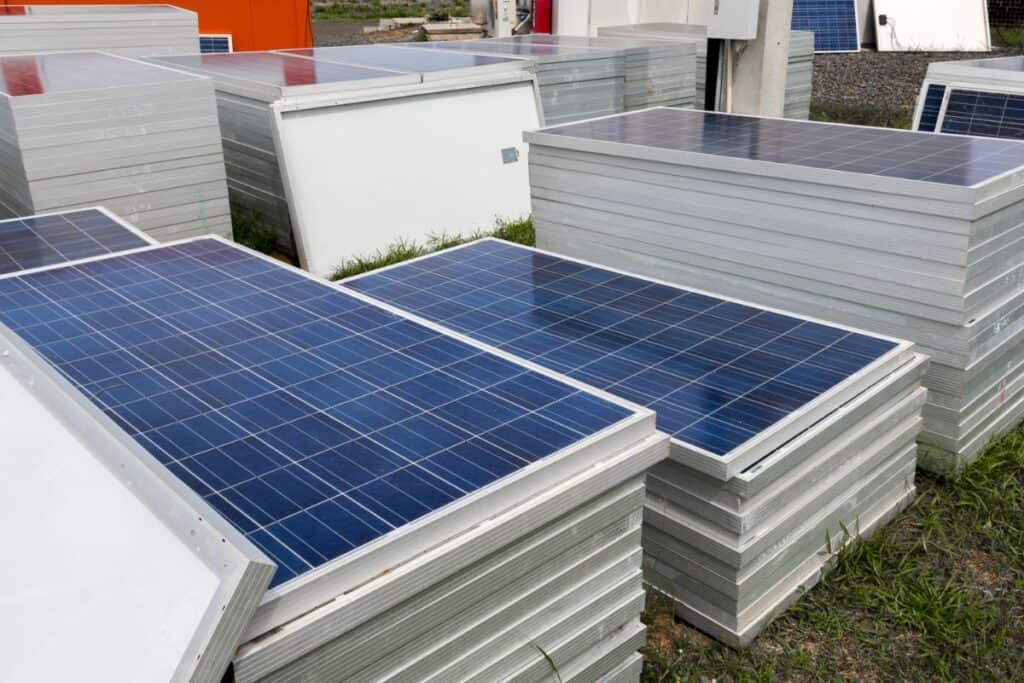So, you’ve invested in solar panels and now it’s time to transport them. Not sure where to start? You’re in the right place!
Transporting solar panels can be a delicate operation. Their large size, weight, and the fragility of their glass surface pose significant challenges. But, with a careful approach and detailed planning, you can successfully transport them without damage.
Solar panels can provide enormous benefits, from slashing electricity bills to reducing carbon footprints. However, transportation damage can quickly negate these advantages.
Therefore, it’s crucial to understand how to properly transport solar panels to ensure they arrive at their destination in perfect condition.

Firstly, preparation is key. Before moving a solar panel, ensure you have a suitable vehicle for transport. Ideally, the vehicle you use should have enough space, such as a flatbed or area, to accommodate the size of the panels.
Packing Solar Panels To Transport: Vertical vs. Horizontal Stacking?
Solar panel orientation while packing may seem like a minor detail, but it can have significant impacts.
Packing solar panels can be done either vertically or horizontally, with each method having its pros and cons. The choice depends on factors such as transportation mode, available space, and the number of panels being transported.
When panels are packed vertically, they tend to take up less floor space which could be advantageous if the transport vehicle has limited space.
Vertical packing also allows air to circulate around the panels, potentially reducing the risk of overheating.
However, vertically packed panels could be more prone to tipping over and sustaining damage if not secured properly.
When packing panels vertically, make sure to firmly strap and brace them to prevent any movement during transit.
On the other hand, horizontal packing offers greater stability and safety since the weight of the panels is distributed across a larger area.
However, this method could take up more floor space, and stacking multiple panels horizontally could increase pressure on the bottom panels, potentially causing damage.
In summary, both vertical and horizontal packing have their merits and drawbacks.
The decision should be based on factors such as transport space, number of panels, and the securement methods at your disposal.
No matter the orientation, proper padding, and securement are essential to protect the panels during transport.

The Best Way To Pack Solar Panels When Transporting Them
When you’re preparing solar panels for transport, it’s time to bring out your inner packaging expert.
Solar panels should be enclosed with protective materials like bubble wrap, accompanied by cardboard or wooden boards on either side to offer additional security and to maintain flatness. This protective casing ensures that the panels are well-insulated against potential bumps and scrapes during the journey.
Solar panels are intricate devices made up of photovoltaic cells beneath a glass layer. This construction, while excellent for capturing sunlight, makes them vulnerable to shocks, vibrations, and impacts. Therefore, the correct packing strategy is essential.
Firstly, each solar panel should be wrapped individually. The use of a cushioning material such as bubble wrap or foam can provide a protective layer against accidental knocks or bumps.
Wrap each panel thoroughly and secure the wrap with packing tape to ensure it stays in place.
After wrapping, you should box the panels. I would recommend Special solar panel boxes as they provide the perfect fit and adequate protection for your panels.
Made of robust materials, these boxes are specifically designed to snugly accommodate your solar panels. This reduces the chances of movement inside the box that could cause damage.
If solar panel boxes are not available, use any rigid, sturdy box that fits the panels well. Fill any empty space within the box with additional packing material to avoid movement during transit.
The final step in the packing process is sealing the boxes securely. Properly close and secure the boxes by reinforcing the seams with heavy-duty packing tape.
In essence, packing solar panels for transport involves careful wrapping, boxing, and sealing. By following these steps, you’re setting yourself up for success.
Once you’ve packed all your panels, it’s time to load them up…
How To Best Load Solar Panels Before Transporting Them
Loading solar panels onto the vehicle is a critical step.
Place the panels on a flat, stable surface within the transport vehicle to minimize movement during the journey. If possible, use straps or similar restraints to secure them in place, ensuring you don’t tighten them excessively to prevent damage.
It’s best to have at least two people for this job – one person to lift and another to guide and steady the panel.
Always lift with your legs, not your back, to prevent injuries. Panels should be loaded carefully onto the vehicle, ensuring that they are placed flat and are not leaning or bending.
Once the solar panels are loaded onto the vehicle, secure them properly.
Use ropes or straps to tie the panels down, preventing movement during transport. However, avoid applying too much pressure or over-tightening the straps, as this could cause damage.
In some cases, you might find that solar panels are too large or heavy to transport safely on your own. In these situations, it’s worth considering professional transportation or delivery services.
These services have the right equipment and experience to safely transport solar panels.
Finally, remember to check the weather before transportation. Avoid transporting panels in poor weather conditions where they could be exposed to rain, hail, or strong winds.
Transporting solar panels doesn’t have to be a daunting task. With proper planning, adequate protection, and careful handling, your panels can be safely transported, ready to provide you with clean, renewable energy.
